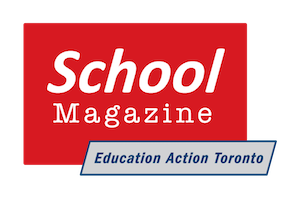The Shock Doctrine and the Tory budget
It’s always time to keep a sharp eye on whatever the Ford government says or claims to do – especially in the time of COVID. As Ontario enters its third wave of shutdowns amidst confusion and speculation over who gets vaccinated, where and when, people at highest risk across the province have the lowest rate of vaccination overall, while the opposite is true for areas with the lowest rate of infection. There is a lockdown everywhere, but not a stay-at-home order, recommended by health officials. As of Friday, 3 089 new cases were confirmed in the province with 1,111 people in Intensive Care Units (ICU) as of Mar 31. In the last couple of weeks there have been 2 487 COVID cases in Ontario public schools and 63 of them have been closed. Yet schools will remain open after the special April break that was speculated, might be postponed again.
But this is really a story about the Ontario budget released a couple of weeks ago, in this blizzard of chaos when the news is all about the pandemic, not the Tories’ inclination to make political use of it. The 2021-22 Ontario budget doesn’t say much about education. We’ll have to wait for more details when the Ministry of Education releases its grants, but to get some idea, the 2020 budget from just last November was $31 billion, pretty much a stand-pat budget, worrisome in light of the amount of money school boards have had to draw from their reserves to cover some of the costs of dealing with COVID-19. What new expenses will they have to pay for?
School board finances
School boards’ finances show that the province hasn’t really been leading the charge to save schools from the pandemic. Canadian  Centre for Policy Alternatives (CCPA) economist Ricardo Tranjan took a closer look and found that of about $655 million spent on extra staffing, school boards ponied up $351 million, the federal government paid $119 million while the province chipped in $185 million. He adds according to another CCPA analysis, overall the province spent 6% of the total dollars put towards direct COVID-19 measures with the federal government picking up the remaining 96%.
Centre for Policy Alternatives (CCPA) economist Ricardo Tranjan took a closer look and found that of about $655 million spent on extra staffing, school boards ponied up $351 million, the federal government paid $119 million while the province chipped in $185 million. He adds according to another CCPA analysis, overall the province spent 6% of the total dollars put towards direct COVID-19 measures with the federal government picking up the remaining 96%.
And don’t count on more money to cover extra school costs in the Fall; start your layoff plans now, explains a memo from Deputy Minister Nancy Naylor sent out to school board officials at the end of February. That extra money was the $1.6 billion spent by mostly school boards and the federal government over the past year. There was nothing in the budget indicating what if any support will continue though, according to Colin D’Mello of Global News, there’s supposed to be a drastically smaller $59.3 million available from the 2021 budget. There is still $700 million from the federal COVID-19 Resilience Stream to repair frail and aging school ventilation systems – but that’s not new budget money for next year. One big question, in light of the current wave of COVID cases, is what school boards will do to cope with basic safety now that they’re short about half of their reserve funds.
Permanent online learning
Education Minister Stephen Lecce wants to come up with a fixed solution: online learning. You might remember that his Ministry was planning to make secondary students take a minimum of 4 courses online to qualify for a diploma a couple of years ago. In the round of strikes across the province, last year, that requirement was filed down to 2 courses and kids could apply to get out of them. The budget promises $40 million to improve access and “connectivity within school buildings and provide innovative tools and resources to help ensure that students and teachers can seamlessly participate in remote learning in response to COVID‑19, and for the future.” How this is going to keep kids awake as they tune in – or not- to online learning or even be present at the screen, is a good question. If one lesson must surely be learned from the current experience with online learning, it’s that it has been a disaster – not just because of lack of “connectivity,” but because of the lack of the human element, the teacher running the class, tending to individual kids, assessing, honing skills, reteaching and so on. Forty million dollars won’t change that, though it might be good for global software company D2L that provides the Brightspace software used in online classrooms.
Clearly, Stephen Lecce is following his Harris government predecessor John Snobelen’s dictum to never “…let a perfectly good crisis go to waste.” The mess caused by COVID-19, along with his government’s response to it, has provided the appearance of a need for ongoing online learning. It’s just that it’s also a pedagogical illusion.

Direct payments for children
The province is moving ahead with direct payments for kids whose families are dealing with extra costs related to the pandemic through the Ontario COVID-19 Child Benefit: “The additional costs of virtual learning, reduced access to after school programs and child care, barriers to getting back to the workplace, and the stress of the necessary public health restrictions mean families need and deserve relief.”
In the Fall, the government made a payment of $200 per child under the age of about 17 to cover pandemic related costs and $250 for young people aged 21 and younger with special needs. That amount has gone up to $400 and $500 respectively. It’s not a lot of money considering extra costs people face, and it’s not even clear who it’s for. There’s no financial status criteria mentioned in the budget or related documents. “Eligible” people, apparently, get the money. School Magazine made one of its regular attempts to get clarification from the Ministry of Education about this point as well as what government pocket was providing the funds and, as usual, received no reply.
Why not put the $980 million this Child Benefit costs towards daycare, school safety and after-care programs to make them easily accessible, safe and able to stay open? Why not use the money to provide support for front line workers?
For that matter, why not make everyone in schools safer by spending the money to reduce class sizes, something educators and parents have been pushing for the past year? Why not make everyone in the province safer by legislating paid sick leave? There’s nothing in 2021-22 budget about either of those possibilities.
Finally, in light of 2021 budget forecast of deficits ranging from $33.1 billion for 2021-22 to $20.2 billion in 2023-24 what does the Ford government plan to do about those tax cuts it introduced last November when it tabled its 2020 budget?
Tax cuts include- in millions of dollars ( Table A3 Ontario Budget 2020):
-
-
- Reducing Employer health tax: $90 ( 2020-21); $360 (2021-22); $380 (2022-23)
- Reducing property tax for employers: $175 (2020-21); $385 (2021-22); $450 (2022-23)
- Property tax relief for small businesses: $35 (2020-21); $85 (2021-22); $110 (2022-23)
- Total (note that this includes all tax cuts): $315 (2020-21); $915 (2021-22); $995 (2022-23)
-
Stay tuned for more details as the Ford government releases its grants to school boards.


